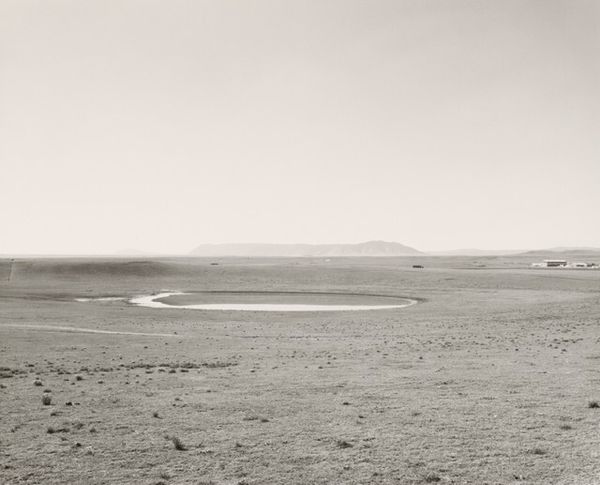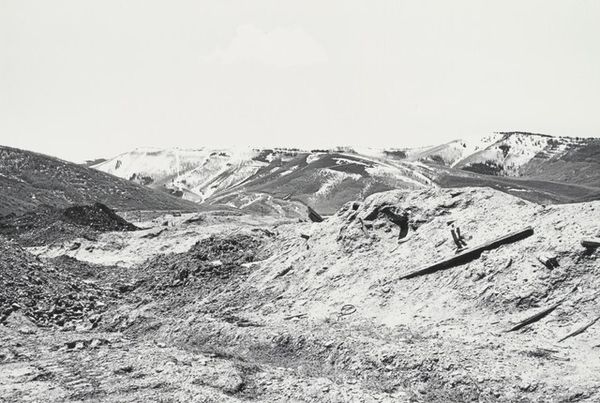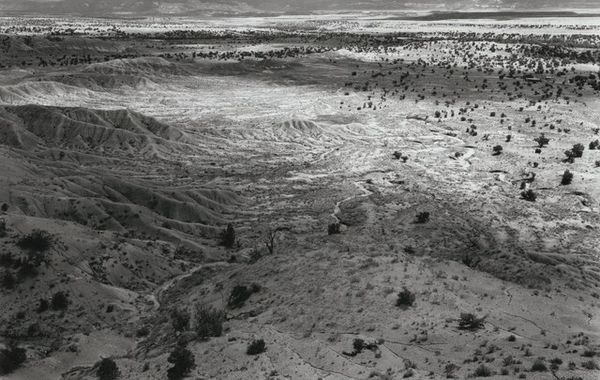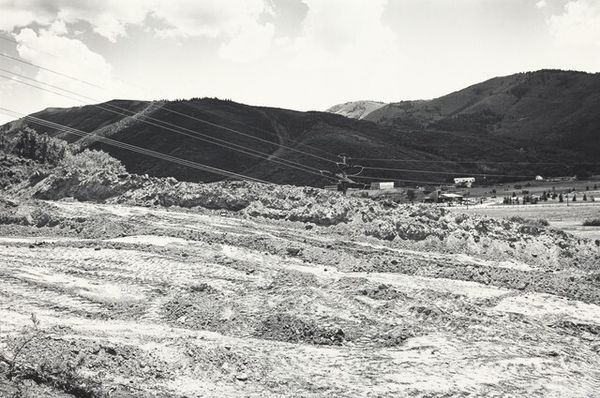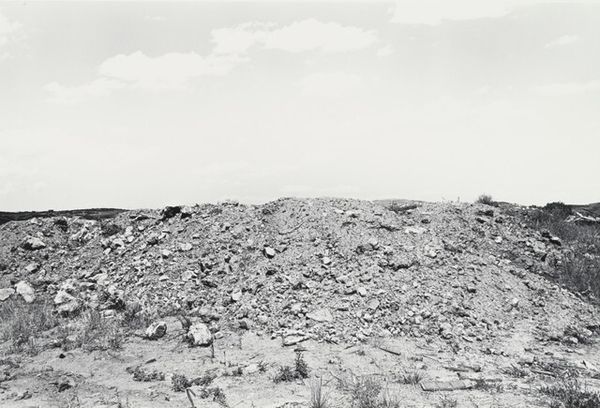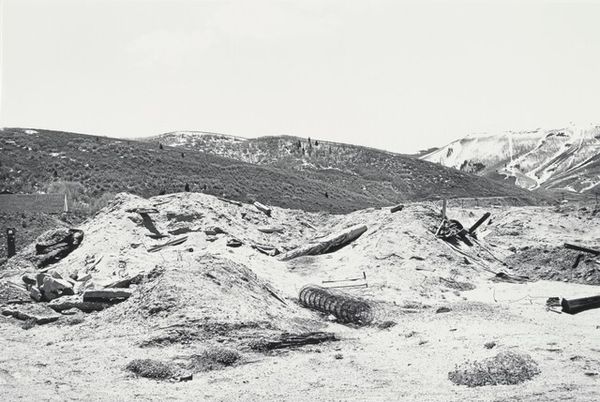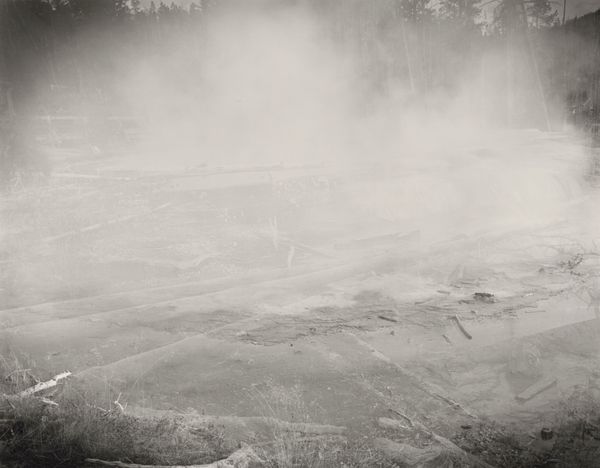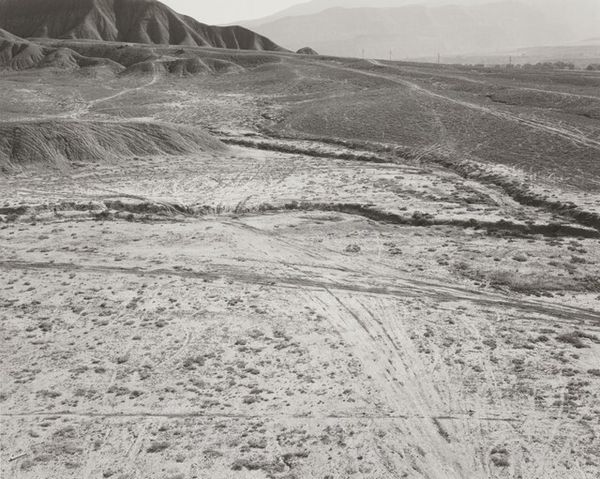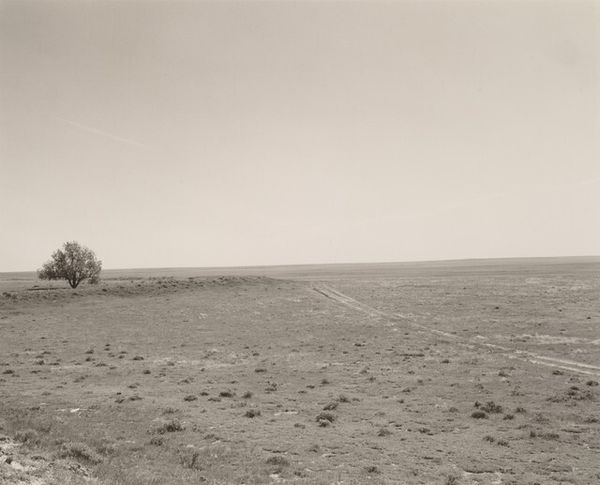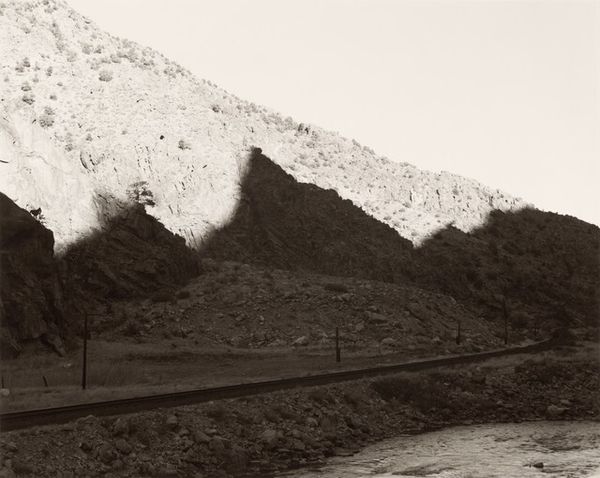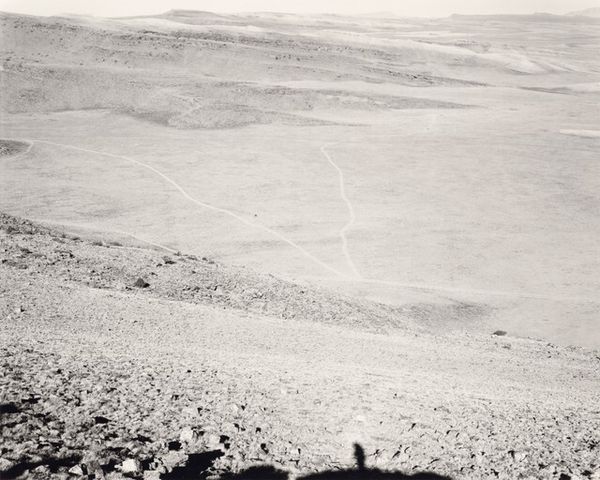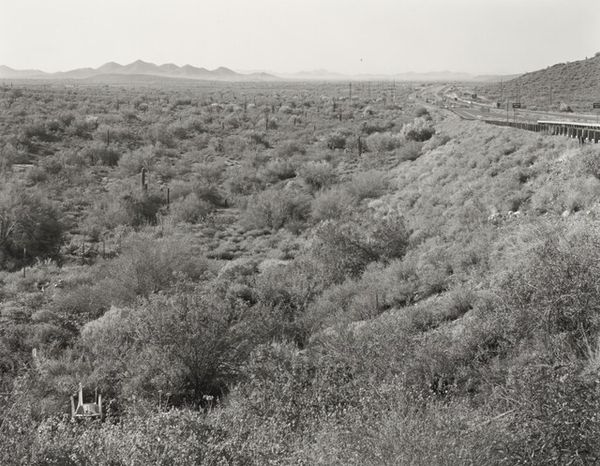
Looking Southwest from State Highway 248, 0.1 Mile East of Buffalo Bill Drive 1979
0:00
0:00
photography, gelatin-silver-print
#
conceptual-art
#
black and white photography
#
postmodernism
#
landscape
#
photography
#
black and white
#
gelatin-silver-print
#
monochrome photography
#
monochrome
#
monochrome
Dimensions: image: 16.25 × 24.13 cm (6 3/8 × 9 1/2 in.) sheet: 20.32 × 25.4 cm (8 × 10 in.)
Copyright: National Gallery of Art: CC0 1.0
Editor: Here we have Lewis Baltz's "Looking Southwest from State Highway 248, 0.1 Mile East of Buffalo Bill Drive," a gelatin-silver print from 1979. I'm immediately struck by its starkness and the sense of almost desolate space. What readings does it suggest to you? Curator: Desolation is certainly a powerful initial reading. I see a landscape marked by intervention. Note how the tire tracks scar the foreground. The landscape is a repository of countless, often conflicting symbols. This piece invites us to consider how we assign meaning to the environment. Editor: So you’re saying the landscape isn’t just a neutral backdrop but is actively shaped by human activity? Curator: Precisely. Baltz directs our gaze to how roads and industry impact even seemingly untouched spaces, changing our memory of this landscape. Buffalo Bill, invoked in the title, once stood as a symbol of the romanticized West. By 1979, that symbol collides with stark industrial intervention. Do you feel a sense of loss here? Editor: Definitely. The monochrome palette amplifies that sense. It’s as if the image is drained of life. Curator: Yes, and in stark contrast to color landscape photography, that draining serves a specific purpose, turning the idealized symbol on its head, offering social critique. Editor: It’s fascinating how Baltz layers these visual and cultural elements. I hadn't considered the "Buffalo Bill" reference within the photograph itself. I now appreciate it more than just an uninteresting capture of the landscape! Curator: I agree. The symbolism transforms a seemingly straightforward photograph into a meditation on memory, industry, and the evolving American landscape.
Comments
No comments
Be the first to comment and join the conversation on the ultimate creative platform.
